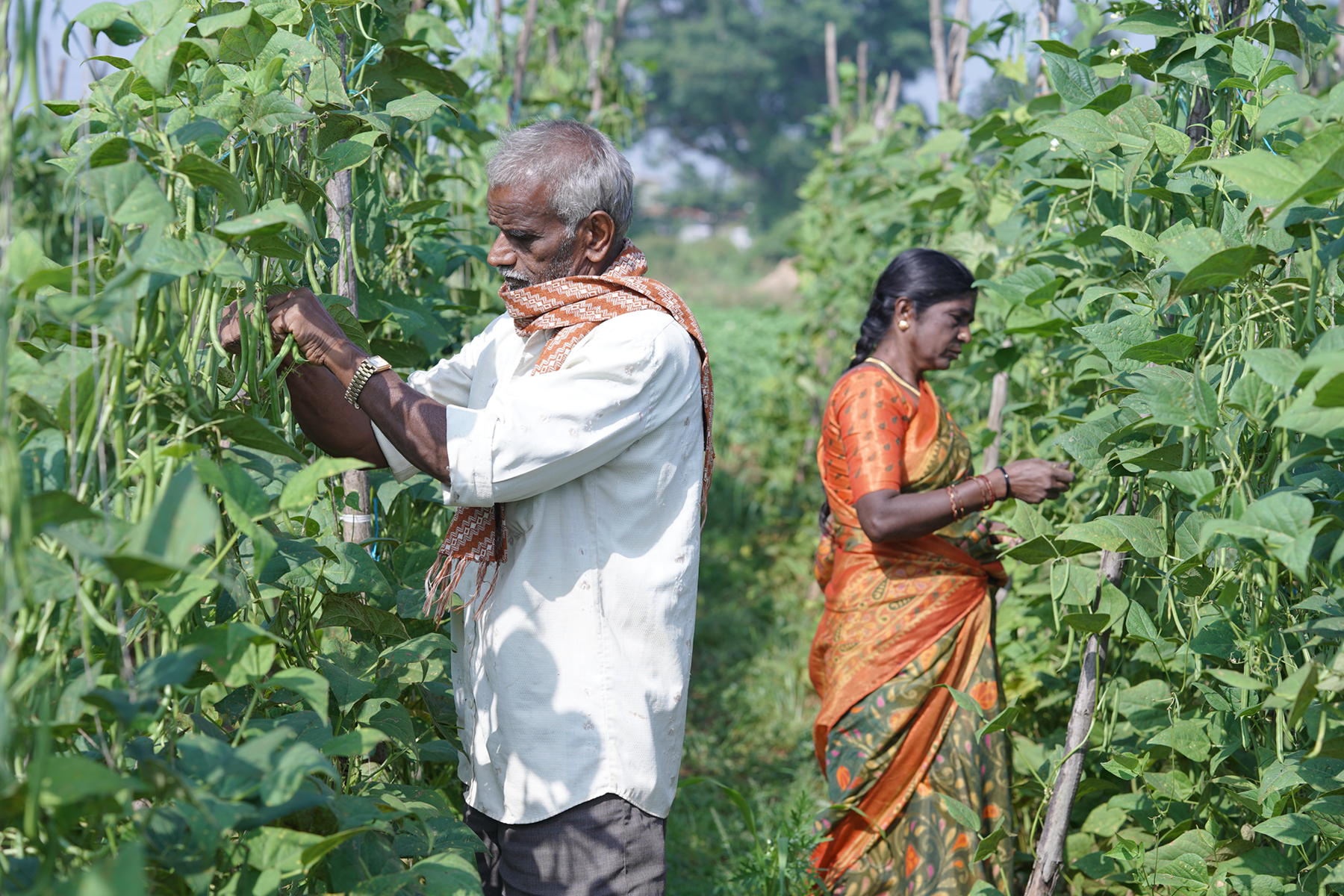
For small-scale organic farmers in Karnataka, India, taking produce to the market comes with its challenges. Extreme heat can shrivel tomatoes in transit. Prices rise and fall daily with changing demand. At the end of the day, a farmer might have no choice but to sell—even at a low price—because produce won’t last another day. But solar-powered cold storage can help.
SELCO Foundation is a nonprofit organization dedicated to bringing affordable solar energy solutions to underserved communities in India. Founded in 2010 by Harish Hande, SELCO aims to provide sustainable energy access to low-income households, small businesses, and institutions. The organization works at the intersection of clean energy, poverty alleviation, and social equity, using decentralized solar energy systems to improve the quality of life for marginalized populations.
SELCO’s approach is deeply rooted in understanding the specific needs of the communities it serves. In Karnataka, this means working with local farm cooperatives to finance and build cold-storage, extending the shelf-life of local produce and giving farmers more control over how and when they sell. More control means better deals and higher incomes, especially for thousands of small-scale farmers who have few options otherwise.
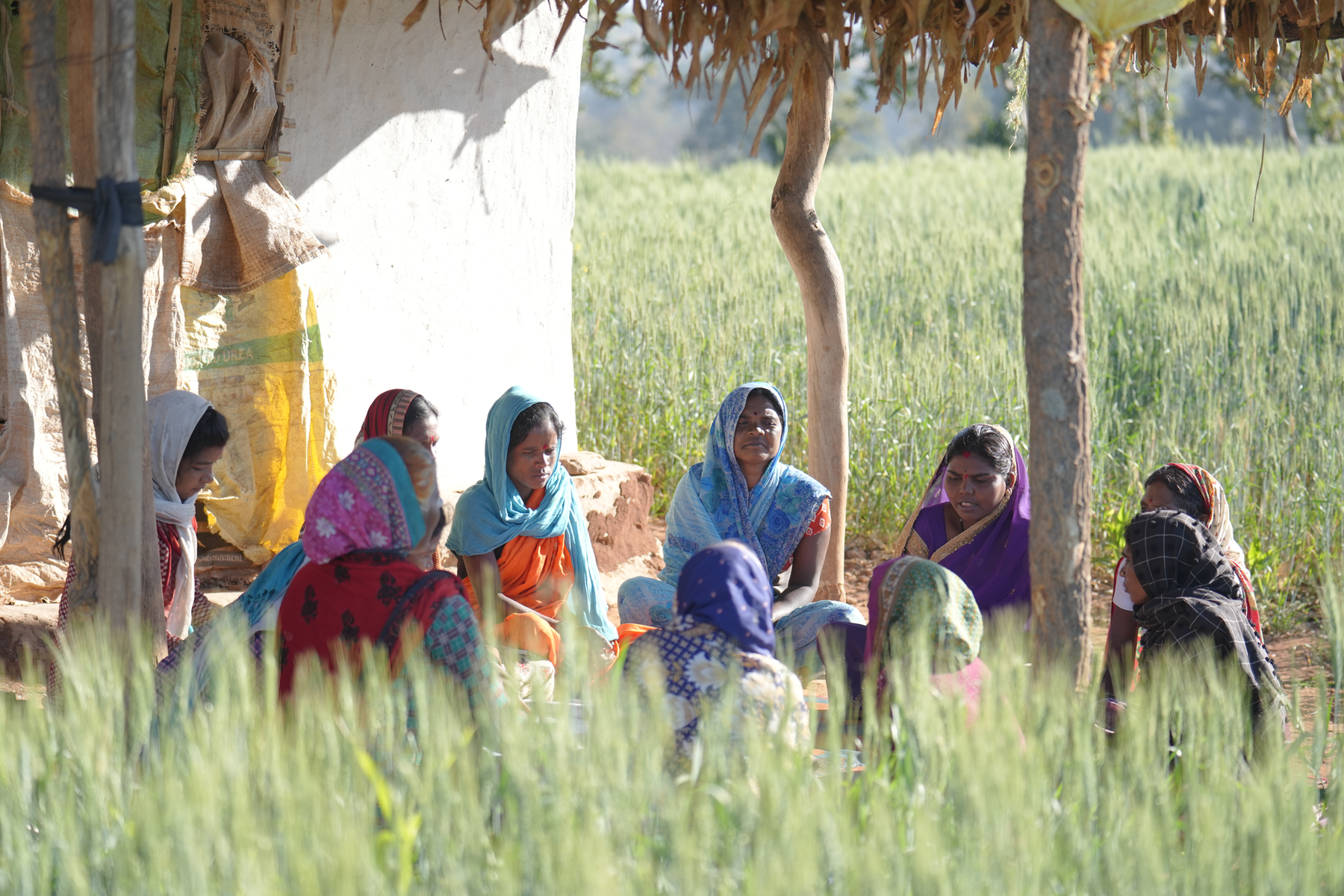
Meanwhile, the approach saves energy, supporting SELCO’s intertwined goals of delivering what people need from a development perspective while also advancing a just energy transition. Waverley Street’s Quinn Daly spoke with Rachita Misra, SELCO’s Associate Director of Knowledge and Advocacy, to learn more about SELCO’s work.
Quinn Daly: I know you've been at SELCO for close to a decade. So how did you come into this work?
Rachita Misra: My background is architecture, but I also studied economics and policy at the London School of Economics. As an architect, you're often taught to zoom into the human needs, and then also the whole aspect of city planning gives you a context of a city, right? So it's that skill of being able to go deeper and then pull out, and I think that's the piece that I usually end up using at SELCO.
We see it as a responsibility to speak very openly about any learnings that we have had. We believe in scaling via replication, and that can only happen if we speak more about both our failures and our successes. What did we do and what did it achieve? So that's the portfolio that I lead right now, the knowledge portfolio, which encompasses many different things. The aim is to be open source.
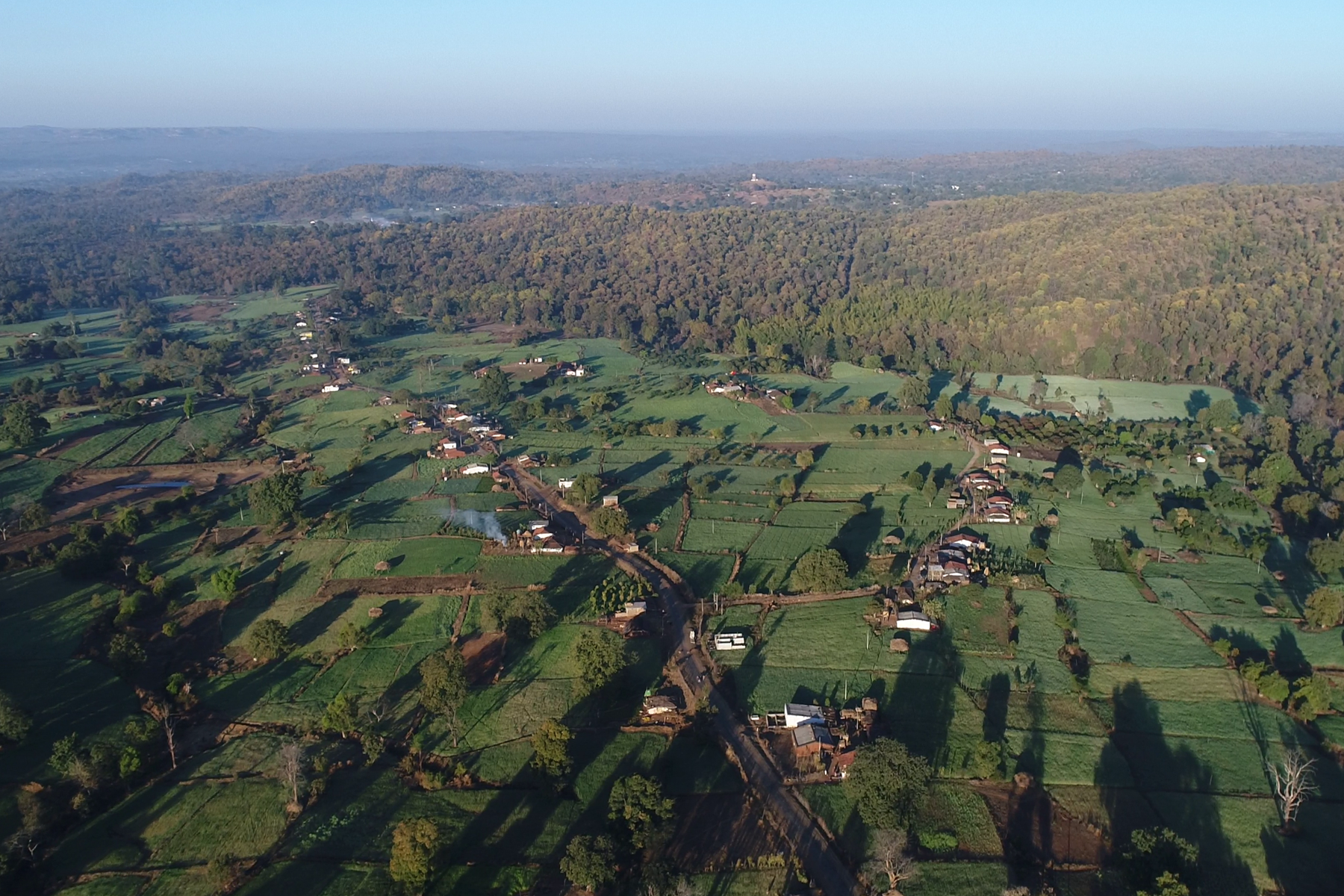
Daly: Taking a step back, how would you describe SELCO if you're having tea with friends, and they're like, ‘Hey, you've been at that place for 10 years now. What do you do again?’
Misra: I think the genesis of the organization and our work comes from realization that there are two really wicked problems, complex issues. And one is, of course, climate change, and the other is growing inequality. If you look at both of these issues, there is a very sweet spot where they both overlap, where you cannot think of providing a ladder for development for communities if you don't have access to energy. And at the same time, if you look at climate change, one of the biggest contributors is energy itself. And what we do at SELCO is basically try to create solutions in a very, very ground-up manner to address both.
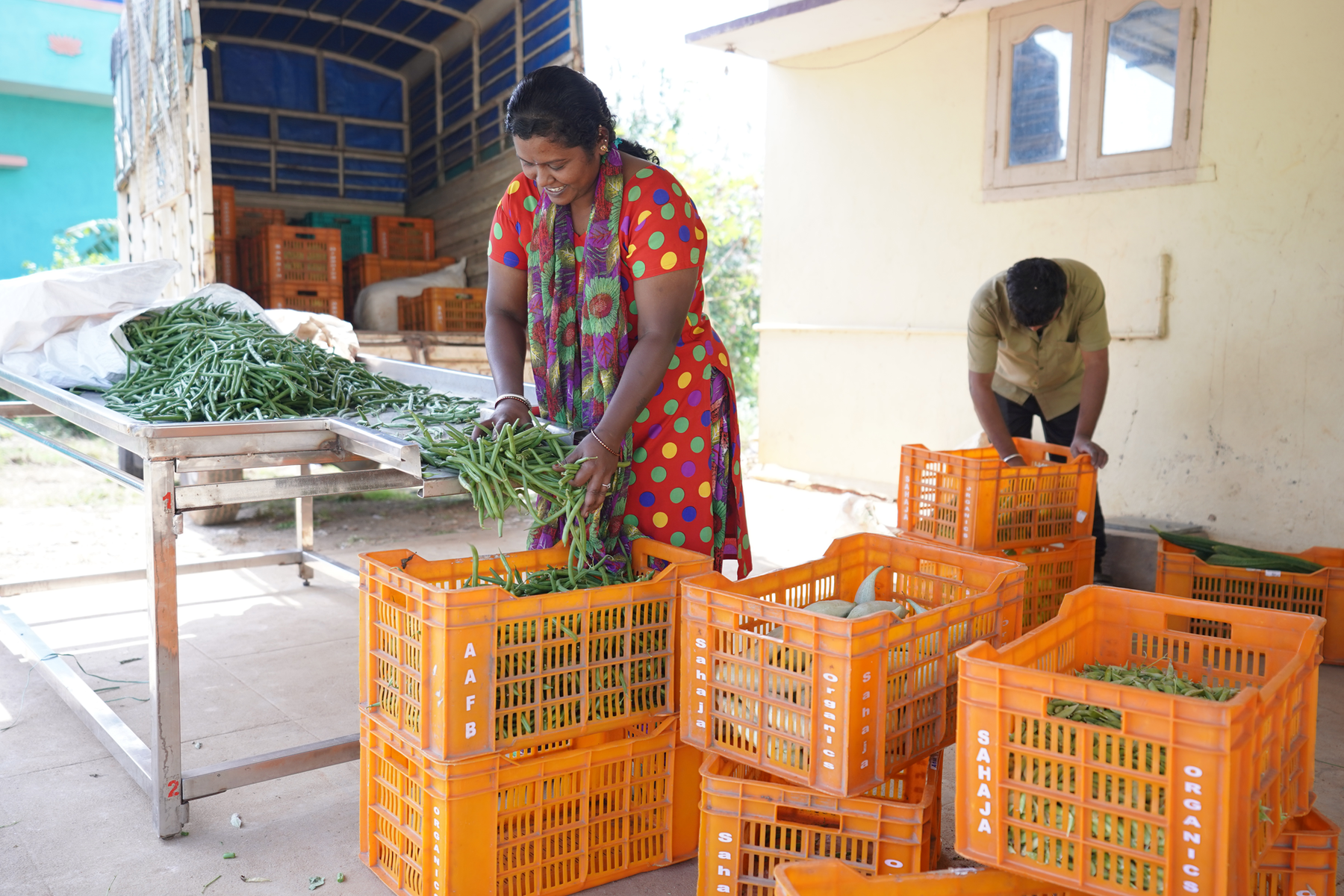
Daly: One of SELCO’s focus areas is cold storage. Can you talk about the impact solar-powered cold storage has for farmers, and what the entrepreneurship piece of this looks like?
Misra: I think that about 89% of farmers in India actually have two to five acres of land only. Small parcels. So when they are trying to negotiate with the market on both sides, they're a very small player in that space. You have this great institutional power that is being formed at the grassroot level of farmer producer organizations, collectives, cooperatives. Can we actually make an ecosystem around them of services—technologies, energy access, financial products, training modules that can actually allow them to, you know, climb this ladder? [With distributed cold storage] a big, big benefit for farmers is that your transaction cost reduces so you don't have to travel far away to store your produce or to sell your produce. You have less wastage, because you are able to store it at the place of production.
Another aspect is that you can negotiate with the market better. So if the pricing in the market is going lower because supply is high, you can save your produce for two, three days, and sell when market prices are better. Understanding the impact of energy intervention on livelihood results in this model which brings together technology and financing access. So it’s that whole ecosystem that we develop around these farmer collectives, and they're able to take that forward.
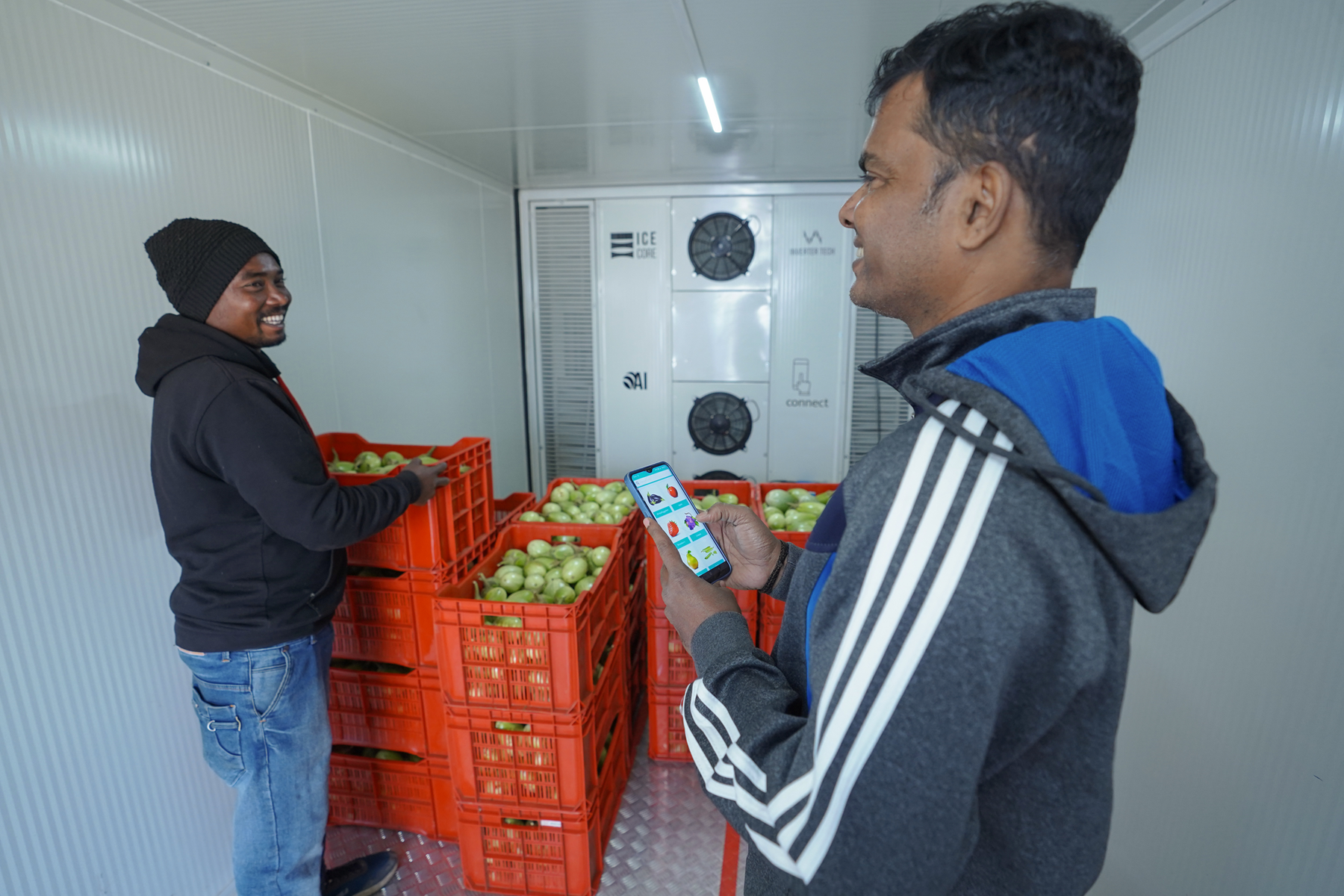
Let's first prioritize the people's needs. It automatically forces us to look at viability, energy consumption, energy affordability.
Rachita Misra
Daly: How does this ladder up to SELCO’s larger mission? Clearly, this is indicative of it, where there’s that Venn diagram of equity and climate change.
Misra: The bigger mission is, as I mentioned, balancing the needs of the people with the challenges that are going to come our way from the perspective of climate change. We do realize that it's important to work at that intersection, because it's not one or the other. If we need to go forward, we need these new development pathways which actually bring both of those aspects together.
There was government data a few years back which said only about 50% of the cold storage needs of the country are actually being met right now. So we said, let's compute numbers just from the climate side. How can we design for the remaining 50% of the cold storage units? What would that technology look like? What if we power it by solar? If you're powering it by solar, let's push the boundaries on efficiency, right? And once we do that, you realize you can meet the same need in just about half of that.
So from a climate perspective, this is the better way, because you're consuming less to meet the same need, and when you're consuming less, you are spending less on energy. On the other hand, the other question that was important was, who owns this cold storage unit? And where does it lie? And a beautiful thing happened—we had worked on decentralized cold storage units whose economics worked at a lower scale, needed less investment, and could thus be owned by farmer groups themselves.
On one hand, energy transition became possible, because I need half the size of solar to power that same cold storage unit. But the whole solution design was also saying, let's first prioritize the people's needs and build back the ownership of their produce. Keeping both the problem statements at the core, we were forced to look at viability, ownership, energy consumption, energy affordability. In the end, the solution was more affordable on the ground—its value was proven. And that is what results in sustained adoption on the ground as well.
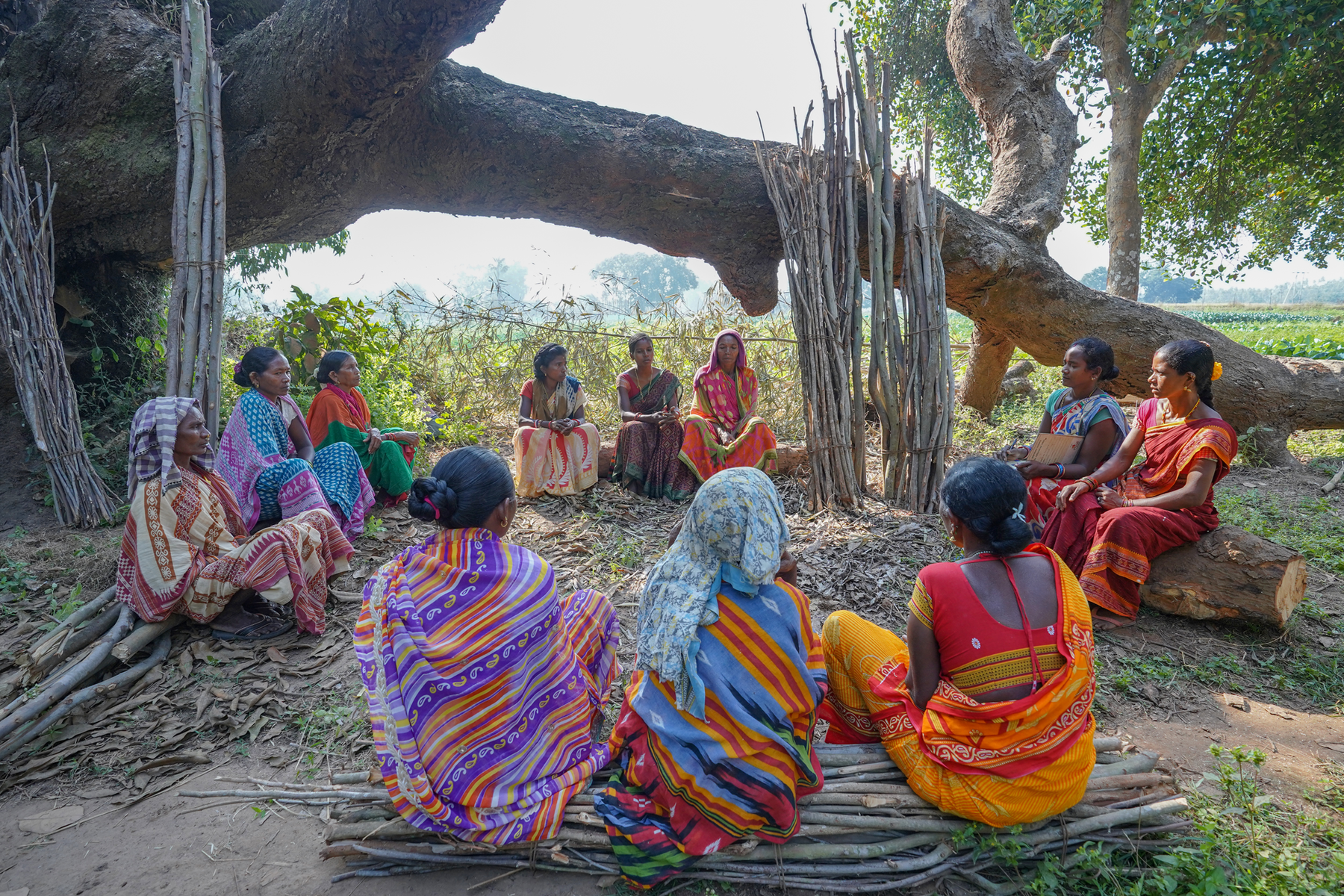
Daly: What are some of the other applications that you see?
Misra: We also tried saying, what if we use the same technology to create spaces? Because what is a cold storage in the end? It's a container or space that you walk in. And we actually did a school with the same container, the same technology and a slightly larger space—because we are spreading the same cool air across a larger area. So you can just go and assemble it—you can do pop-up health facilities like that. You can do temporary schools like that. In some places, you can have livelihood centers, training centers.
The other portfolio that's also really exciting is we're working on a health program. Everything that you heard from me around livelihood, we do a similar thing with health as well. The health sector right now is responsible for 5% of global emissions. We know that in the Global South or in developing countries, people don't have access to health facilities with basic services. So again, that convergence point where we're saying, how do you really expand health services, but also not do it in a manner where it's putting more pressure on the planet? That’s the sweet spot that we've been working on. In India, we are working towards 25,000 health facilities on solar by 2026. We already have two states in the country where all health facilities are on solar right now.


